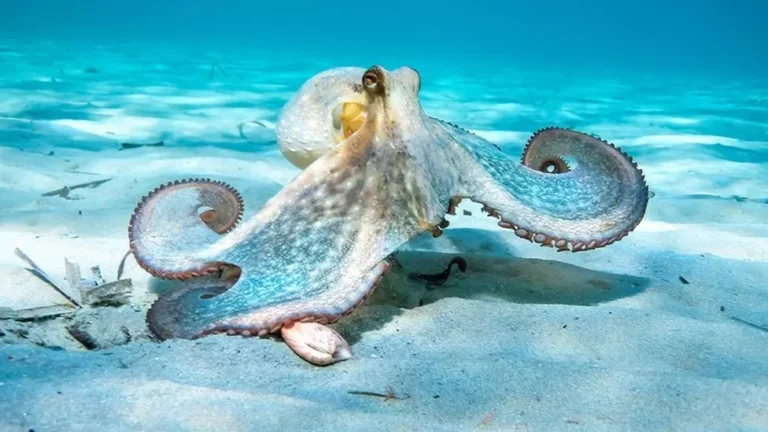Andrews (2020) defined non-human animals (henceforth, animals) as being minded. The professor claimed that it doesn’t exist a unique mind (p. 8), as changes occur (i.e., trauma injuries), some of which are inevitable (i.e., ageing) (ibid.). She maintained that animals, as well as humans, are minded indeed. It doesn’t exist a unique intelligence either (see Gardner (1983)’s theory of multiple intelligence). Depending on their needs, animals are good at different things and have different complex capacities (i.e., learning, problem-solving, planning, memory) (Godfrey-Smith, 2016, pp. 50—51).
So do octopuses! For instance, they are able to “see” colours through the reflection on their skin. Namely, they can distinguish colours through the brightness reflected on their skin (ibid., pp. 119—121). Octopuses have millions of neurons* in their tentacles “which can […] taste and touch and also control motions” (ibid., 2017, § 1).
Even though primates are more similar to humans, they are not the only ones. Between humans and dogs, there is a phylogenetic distance, yet they are socially similar. In contrast, reptiles and xenarthras are judged to be the least similar ones (Urquiza-Haas and Kotrschal, 2022, p. 234**).
Although octopuses are not as similar to humans as other animal species, we still have a common (very distant) ancestor (Godfrey-Smith, 2017, § 4). Octopuses are “smart”—Godfrey-Smith (2016) is reluctant to use that term. To be more specific, they own complex cognitive processes (i.e., memory, recognition, exploration, discrimination, and learning) (ibid., 2017). Like other animal species, they are able to acquire information and use it under certain circumstances (Rossano and Kaufhold, 2021). They aree not “dumb” species whatsoever. Nevertheless, not everyone is convinced of the idea that animals are sentient beings that share similarities with humans; not in terms of linguistic competence, though. Animals are not linguistically competent as it happens, but still, they are intelligent.
Dupré (1996) said that intelligence doesn’t necessarily require language possession (p.331). Animals, through behavioural manifestations (i.e., the waggle dance performed by bees indicating the distance of the nectar source; see Wynne & Uoleil, 2013 for more details) or sounds (i.e., signals for warning; see Rossano and Kaufhold, 2021) communicate with their counterparts. That is still a medium to convey messages (Glock, 2000, p. 43). And octopuses know how to do that!
*close to dogs’ number (Godfrey-Smith, 2017, § 6).
**The similarity was rated by taking into account cultural origin [p. 230])
References
Andrews, K. (2020). The animal mind. An introduction to the Philosophy of animal cognition (2nd ed.). London: Routledge. https://doi.org/10.4324/9780203712511
Dupré, J. (1996). The mental lives of nonhuman animals. In M. Bekoff & D. W. Jamieson (Eds.), Readings in animal cognition (pp. 323–336). Cambridge, MA: MIT Press.
Gardner, H. (1983). Frames of mind: The theory of multiple intelligences. NY: Basic Books
Glock, H.-J. (2000). Animals, thoughts and concepts. Synthese, 123(1), 35–64. https://doi.org/10.1023/A:1005295521736
Godfrey-Smith, P. (2016). Other minds. The octopus and the evolution of intelligent life. NY: Farrar, Straus and Giroux
Godrey-Smith, P. (2017, January 1). The mind of an octopus. Scientific American. Retrieved March 27, 2023, from https://www.scientificamerican.com/article/the-mind-of-an-octopus/ (Originally published in SA Mind, 28(1), 62—69, January 2017)
Lage, C. A., Wolmarans, D. W., & Mograbi, D. C. (2022). An evolutionary view of self-awareness. Behavioural Processes, 194(4), 1–11. https://doi.org/10.1016/j.beproc.2021.104543
Rossano, F., & Kaufhold, S. (2021). Animal communication overview. In A. Kaufman, J. Call & J. Kaufman (Eds.), The Cambridge handbook of animal cognition (pp. 5–35). Cambridge: Cambridge University Press. https://doi.org/10.1017/9781108564113.003
Wynne, C. D. L., & Udell, M. A. R. (2013). Animal cognition. Evolution, behavior and cognition (2nd ed.). UK: Palgrave Macmillian.
[/et_pb_text][/et_pb_column][/et_pb_row][/et_pb_section]

